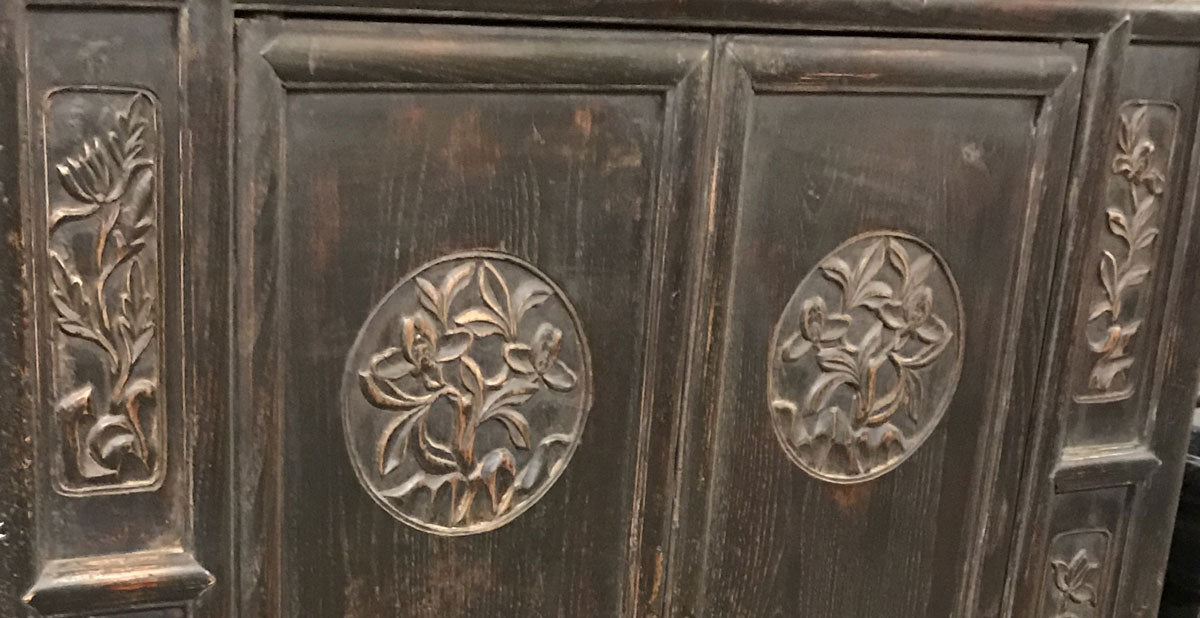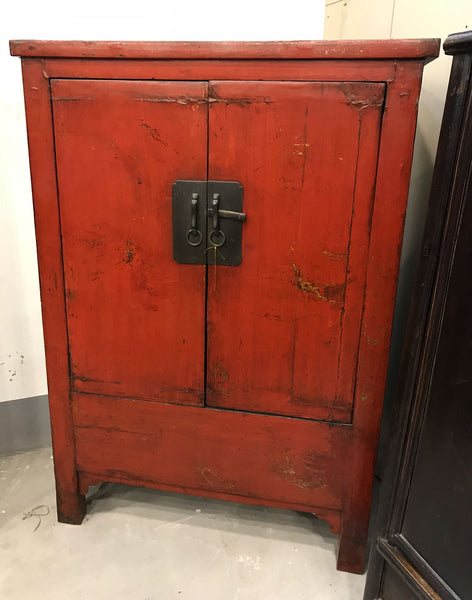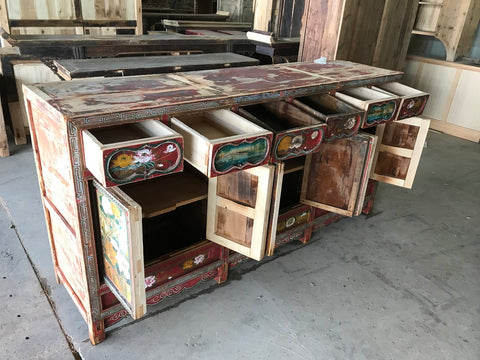
A few top antique picks from my recent China visit
As promised, I thought I would share with you a few of my favourite pieces amongst the hundred or so Chinese antiques that I lined up for our next shipments during my recent trip to China. I always enjoy touring the showrooms and warehouses of our suppliers, each one stacked with dozens and dozens of pieces in long aisles. The difficult part is always deciding what not to take, but this time around I’m really pleased with the selection and variety – there is definitely something to suit every taste.
I visited four different companies in and around Beijing, including one I hadn’t come across before (a rarity after 15 years in the job) and another that I hadn’t visited for a few years but which I was pleased to see still has a great choice of good quality pieces. Each one offers a slightly different approach as to how they restore their furniture, ranging in some cases from higher end antiques that retain their original finish and character to pieces that need a lot more repair and are then given a new lease of life with a complete refinish. My preference is always for the more original furniture that has required less restoration – seems I have expensive taste – but there are also some real gems and an added value to some of the more heavily restored cabinets and sideboards if the work is well executed.
 I always have a soft spot for the beautiful lacquered and painted furniture of Shanxi province in north central China. As I’ve mentioned in earlier blog posts, this is a region that a lot of the best quality antiques originate from, partly due to the techniques used and the skill of the carpenters that ensured the longevity of the furniture and partly as it was an area that survived the ravages of the ‘cultural revolution’ and ‘great leap forward’ backyard steel production better than most.
I always have a soft spot for the beautiful lacquered and painted furniture of Shanxi province in north central China. As I’ve mentioned in earlier blog posts, this is a region that a lot of the best quality antiques originate from, partly due to the techniques used and the skill of the carpenters that ensured the longevity of the furniture and partly as it was an area that survived the ravages of the ‘cultural revolution’ and ‘great leap forward’ backyard steel production better than most.
Along with painted sideboards, Shanxi is well known for its red and black lacquer painted armoires. These are often referred to as wedding cabinets as they were traditionally given as part of a bride’s dowry, although similar cabinets were used more generally for storage. These pieces were once quite common but over recent years It has become difficult to find good quality cabinets, particularly with old paintings.
The one shown above is a really nice example and I’m looking forward to seeing it again in our showroom soon (assuming it doesn’t get snapped up before it arrives). The thick lacquer is in a beautiful, deep red lacquer – the thickness evident around the upper part of the doors where the lacquer has crackled over the years due to movement in the frames and panels below. The paintings have been added using a technique known as ‘miao jin’, with a base layer added first and gold leaf applied over the top. Typically, the gold has largely worn away over time leaving the more stable, darker base underneath. Traces of the original design are still visible – a classic mountainous landscape – but this is now very feint. The hardware here is new, fairly standard for an item of this age, but otherwise the cabinet is in a lovely condition and would look stunning in a modern reception room as an accent piece with warmth and character.

Next is a large, painted sideboard from Mongolia (above). This dates from the mid 20th century so is not particularly old, but it still has its original paintings – bright, muliti-coloured designs showing birds, flowers and animals – all important symbols to the owner. Mongolian furniture, not particularly abundant to start with, has become rarer in recent times. The cabinets and tables of the region are quite rudimentary in their construction (similar to Tibetan furniture) but often beautifully painted like this one, with a lovely palette of reds, greens and blues. This particular cabinet has undoubtedly been quite heavily restored, possibly with some or all of the drawers added from old fixed panels, doors strengthened with new frames and with a thick, clear varnish added to brighten up the old colours. I hope you will agree though that the result really is stunning, with the carpenters breathing fresh life into an old piece to ensure it lives on for many more years to come.
 The same workshop was in the process of restoring another, similar sideboard from Mongolia, also pictured here. This clearly shows the type of restoration that would have been carried out to our one. You can see the much duller, matt finish of the original paintings and the wood that has been used to make new frames to strengthen the door panels. The next stage for this piece will be for it to be refinished with a new lacquer, to deepen the colours and add a similar sheen to ours.
The same workshop was in the process of restoring another, similar sideboard from Mongolia, also pictured here. This clearly shows the type of restoration that would have been carried out to our one. You can see the much duller, matt finish of the original paintings and the wood that has been used to make new frames to strengthen the door panels. The next stage for this piece will be for it to be refinished with a new lacquer, to deepen the colours and add a similar sheen to ours.
Last of my picks is very different in style again. This is a cabinet selected from another supplier – one that I’ve known and visited many times over the last fifteen years and who always has some wonderful antiques towards the higher end of the market. Like the red lacquer armoire, this piece is also from Shanxi province but is in a very different style. Although it has been cleaned and repaired, it would have needed little work in terms of replacing frames or panels. It has not been refinished or varnished, instead remaining in a very original condition.
 The style, with small, decorative panels and doors set within rounded frames, is distinctive of furniture from Shanxi (although different to the painted furniture of the same area) and the quality of workmanship here is clear to see. The grain of the elm wood on each door is closely matching, and the relief carvings of flowers are beautifully worked and delicately picked out. The geometric pattern on the bottom apron incorporates auspicious Buddhist swastika symbols.
The style, with small, decorative panels and doors set within rounded frames, is distinctive of furniture from Shanxi (although different to the painted furniture of the same area) and the quality of workmanship here is clear to see. The grain of the elm wood on each door is closely matching, and the relief carvings of flowers are beautifully worked and delicately picked out. The geometric pattern on the bottom apron incorporates auspicious Buddhist swastika symbols.
This is perhaps not what we in the west typically picture when we think of Chinese furniture and design, but is a lovely example of the workmanship and skill that went into furniture making in China – in this case over a hundred years ago.
Over the coming weeks we will be adding these and dozens of other antiques onto our website with further details about each item so look out for a lot of new arrivals. We’ll also put up more photos and previews on our Facebook page soon so give our page a ‘like’ if you would like to see these. And of course, if you are interested in the antiques I’ve previewed here or details of other pieces we’ve lined up to ship feel free to get in touch.
James





Leave a comment